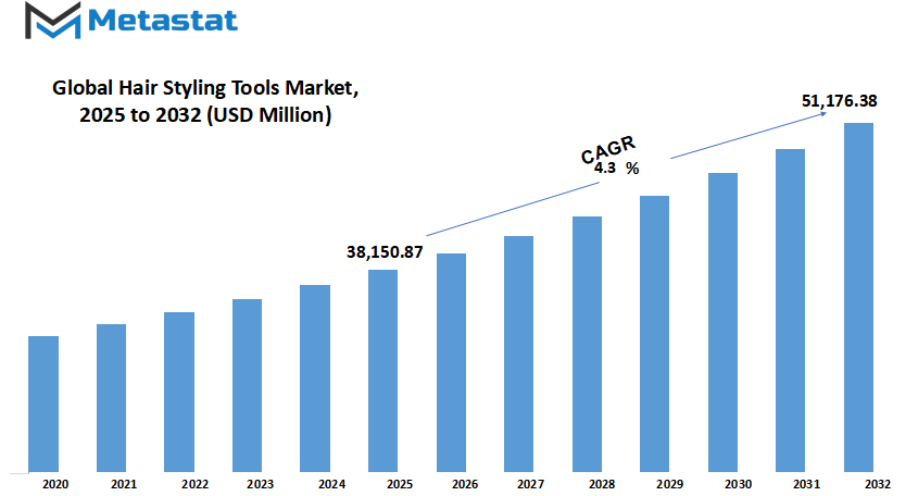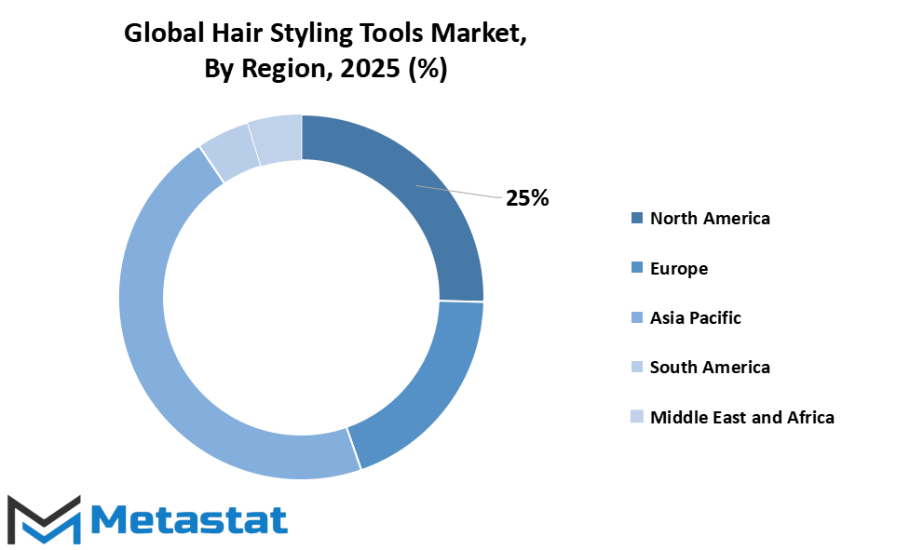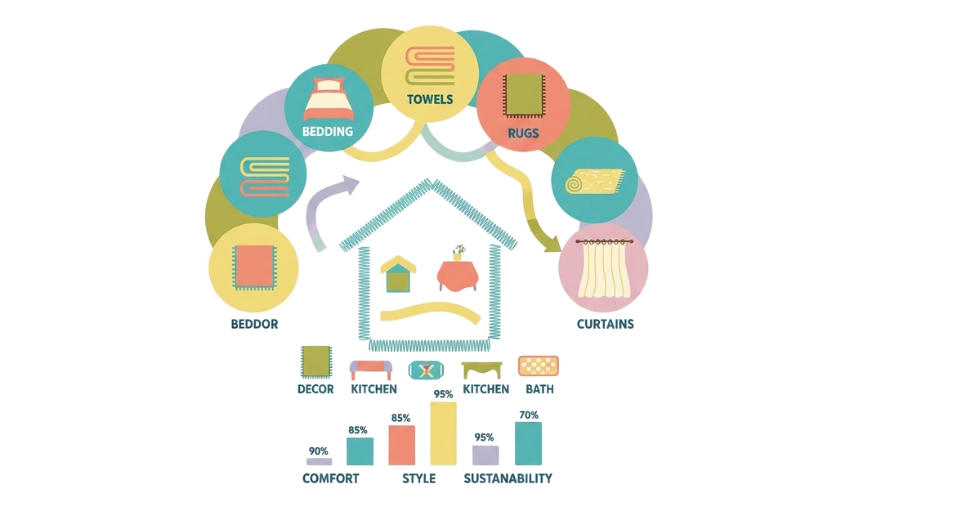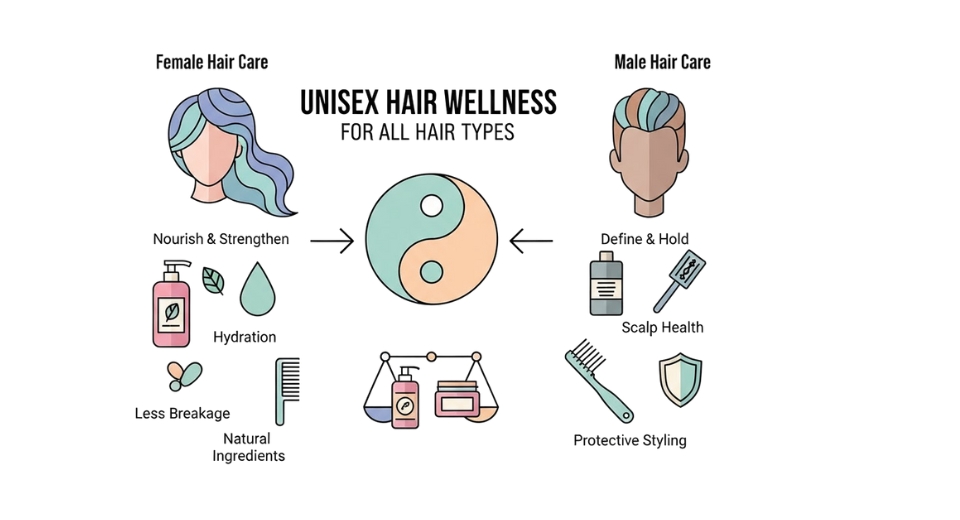MARKET OVERVIEW
The global hair styling tools market will remain a subject of ongoing focus as trends in beauty, fashion, and self-grooming will define the way individuals appear before the world. This industry will not just exist as a part of consumer goods but also as an indicator of social development, cultural tastes, and the need for personal grooming among various groups of people. What is unique about this industry is the way it will combine design, material, and technological innovation to develop products that meet daily routines as much as aspirational styles. The future of the market will be characterized by a cross-over between consumer lifestyles and manufacturers' capability to predict those needs.
Hair styling will cease to be considered merely a component of grooming but rather a means of asserting individuality and identity. Global hair styling tools companies will make investment in research that will advance the efficacy and safety of products to an extent where they will have the satisfaction of meeting the standards of professionals as well as those of home consumers. Equipment will be made with more and more emphasis on protecting from heat damage, shortening styling time, and delivering accuracy that previously would have been obtainable only in salons. Cultural change will also drive the path of this industry. Hair has always held symbolic weight, either in workplaces, social environments, or websites where visual appearance is paramount more than ever.
This will drive the market to continue evolving, providing tools that will address varied textures, lengths, and styling behaviors. There will be a vast array of tools, ranging from straighteners and curlers to sophisticated drying systems, that will meet this variance and keep evolving with it. The global hair styling tools market will also be influenced by the mixture of style and technology. Wireless capabilities, digital sensors, and ergonomic designs will be the norm and not the add-ons. This layering of technology will not only enhance styling but also provide the perception of customization.
Temperature control, result tracking, and settings adjustments will become the means through which users will customize to suit their hair types. The relationship between personal grooming and technology will become increasingly intimate with each product launch. At a larger level, the sector will grow with international exposure to trends in beauty becoming faster. What may have taken years for a hairstyle to break international frontiers before now will only take weeks, facilitated by digital media and exchange of visual ideas round the clock. This exchange of trends will keep the international market of hair styling tools from stagnating but rather shifting with evolving concepts of beauty across the world. Looking forward, this sector will not be merely about tools but about building self-expression and confidence. With more individuals going to find means to beautify themselves at home without compromising on salon-quality results, manufacturers will have to make a choice between affordability and sophistication. The future of the global hair styling tools industry will thus be both a representation of cultural expression as well as a force that defines style itself.
Global hair styling tools market is estimated to reach $51,176.38 Million by 2032; growing at a CAGR of 4.3% from 2025 to 2032.

GROWTH FACTORS
The global hair styling tools market is headed toward a future dominated by evolving lifestyles among consumers and consistent improvement in product design. Increasing focus on personal grooming and greater aspiration for good looks are laying the platform for growth. Styling tools are now no longer considered as lunges but as part of daily necessities that fuel confidence and looks. With grooming practices becoming increasingly sophisticated across various age groups, the market will further gain traction in everyday lives and special events as well.
One of the key drivers propelling the market forward is the ongoing evolution of technology. Products employing ionic, ceramic, and infrared technologies are increasingly known for providing healthier styling outcomes while minimizing heat damage. These innovations are revolutionizing consumer expectations, where customers seek convenience, security, and salon-quality finishes at home. In the next few years, the launch of smarter and easy-to-use devices that learn and respond to hair type and styling needs will increase market dynamism. Those companies that invest in research and product development will be well-placed to generate a wide customer base and achieve brand loyalty. In spite of this expansion, issues continue that might cap overall growth. The marketplace is becoming saturated, with an infinite number of brands vying to capture attention by offering the same thing. This complicates purchasing decisions for consumers and diminishes brand distinction. Meanwhile, professional salon treatments are gaining convenience and appeal, providing consumers with an alternative to in-home styling equipment. This competition has the potential to decelerate sales growth for firms that do not provide differentiated value or convenience. Despite these challenges, brighter prospects are in the pipeline. There is an emerging preference for travel-friendly and multifunctional styling devices influencing the industry's future.
Functional designs that house multiple features, including straightening, curling, and drying, are becoming increasingly popular, particularly with busy professionals and heavy travelers. They are time-saving, clutter-reducing, and address the need for portability while still delivering quality. Brands that successfully address this shift will be able to strengthen their market share and set themselves apart from competitors. The success of the global hair styling tools market in the future will lie in business ability to merge innovation and functionality. Through compliance with customer need for high technology yet need for convenience and versatility, the market will persist to expand. Though market saturation and competition from salon operators are barriers, seeking modern, efficient, and portable styling products will translate into consistent demand in the future.
MARKET SEGMENTATION
By Equipment Type
The global hair styling tools market is moving toward a future shaped by technology, innovation, and changing beauty trends. As personal grooming continues to hold greater value, the demand for modern tools that combine efficiency with style will continue to grow. Consumer expectations are now centered on convenience, performance, and safety, which encourages manufacturers to design advanced products that deliver professional results at home. The market is also being influenced by sustainability goals, where eco-friendly designs and energy-efficient devices are being introduced to meet rising awareness about environmental impact.
By equipment type, the global hair styling tools market is further segmented into hair dryers, hair curlers and rollers, hair straighteners, hair styling brushes and combs, and others. Hair dryers remain one of the most widely used products, but the future will bring lighter models that reduce drying time while protecting hair health. Many brands are already focusing on ionic and ceramic technologies that minimize heat damage and improve shine, a trend that is expected to expand. Hair curlers and rollers are gaining renewed attention as textured hairstyles become popular across global fashion. Automatic curlers with smart heat control will become a staple, making the styling process faster and safer.
Hair straighteners will continue to be a dominant category, supported by innovations that use advanced materials such as titanium and ceramic plates to ensure smooth results with less risk of breakage. Adjustable temperature controls and cordless models powered by rechargeable batteries are likely to redefine user experience in the coming years. Hair styling brushes and combs are also undergoing transformation, with heated brushes, detangling features, and multifunctional designs that combine drying, straightening, and curling in a single device. This segment highlights the strong focus on multi-use products that save both time and effort.
The “others” category includes emerging tools and accessories that will reshape grooming practices. This could involve smart devices connected to mobile apps that recommend personalized settings based on hair type, or even tools equipped with sensors that adjust heat levels automatically. Such advancements will strengthen market growth and set new standards for performance.
Future demand will be strongly influenced by urban lifestyles, social media trends, and rising disposable incomes across different regions. Increasing interest in at-home styling solutions, especially after the expansion of e-commerce platforms, ensures that innovation will remain a driving force. The global hair styling tools market will continue to advance through creative designs, eco-conscious solutions, and smart technologies that transform daily routines into professional experiences.
By Connection
The global hair styling tools market is moving toward an advanced stage where innovation and consumer needs will shape the future of the industry. Modern lifestyles, greater awareness about grooming, and rising disposable income are creating strong demand for hair styling products. Consumers today expect tools that not only provide professional results but also deliver convenience and safety. Manufacturers are therefore focusing on designs that reduce heat damage, save time, and enhance styling experiences. This progress is making hair styling tools more of a daily necessity rather than just luxury products.
By connection, the global market is divided into corded and cordless options, each attracting a specific group of users. Corded devices continue to hold importance due to steady power supply, consistent performance, and suitability for professional salons where tools are used for longer hours. Cordless products, however, are gaining wide attention because of portability, ease of use, and growing preference for quick solutions. Rechargeable batteries with longer life and fast-charging features are being developed to overcome limitations of older models. The balance between performance and mobility will push cordless solutions to expand faster in the years to come.
Technology will play a critical role in reshaping the global market. Smart features such as temperature control, automatic shut-off, and digital displays will be more common. Tools will be designed to work with different hair textures, reducing risks of damage while improving results. Sustainable materials and energy-efficient functions will also become major selling points, reflecting the rising awareness of eco-friendly practices among consumers. Brands that focus on combining style, innovation, and responsibility toward the environment will gain a stronger position.
The global hair styling tools market will also be influenced by digital platforms and online sales. E-commerce will continue to provide access to a wider variety of tools, making it easier for consumers to compare, review, and select products based on personal needs. This shift will drive competition and encourage companies to offer unique features at competitive prices. Marketing strategies using social media and influencer collaborations will further boost consumer interest.
Looking ahead, the global hair styling tools market will move beyond just meeting basic grooming requirements. It will create personalized solutions, blending technology with design, and provide tools that match the fast pace of modern life. Whether corded or cordless, future tools will focus on comfort, efficiency, and sustainability, ensuring that growth in this market continues steadily.
By Distribution Channel
The global hair styling tools market is expected to experience steady growth in the coming years, driven by rising awareness about personal grooming, changing fashion trends, and the continuous introduction of innovative products. Styling tools have become essential not only for professional use but also for household purposes, as individuals increasingly invest in products that help achieve salon-like results at home. Growing influence from social media platforms, beauty influencers, and fashion industries has created a strong demand for advanced styling tools that are both easy to use and highly efficient. The trend toward multifunctional devices that save time while offering professional results is anticipated to shape the market significantly.
By Distribution Channel, the global market is further divided into Supermarkets/Hypermarkets, Specialty Stores, Online Retail Stores, and Others. Supermarkets and hypermarkets remain important due to the convenience of browsing different brands in one location, along with promotional offers and discounts that attract a wide range of consumers. Specialty stores are gaining traction as they provide personalized recommendations and access to premium products that are not always available in larger retail chains. This channel will continue to appeal to customers seeking expert guidance and a wide assortment of professional-grade tools.
Online retail stores, however, are projected to witness the fastest growth, supported by the convenience of shopping from home, wide product availability, and frequent price comparisons. Global expansion of e-commerce platforms along with digital payment solutions will continue to strengthen this segment. Reviews and ratings available online further influence consumer decisions, making this channel highly competitive and appealing for both established and emerging brands. The Others category, which includes small local shops and direct sales, will still hold relevance, particularly in developing regions where digital reach may not be as strong.
The future of the global market will be strongly linked to technological advancements. Features such as temperature control, ceramic and tourmaline coatings, and energy-efficient designs are already shaping customer expectations. In addition, the integration of smart technology, such as heat sensors and AI-driven styling guidance, is likely to become a standard in the coming years. Sustainability will also play a major role, with consumers showing greater interest in eco-friendly products, recyclable packaging, and energy-saving appliances.
Overall, the market will continue to expand as personal grooming becomes a higher priority across various age groups and regions. Distribution channels will evolve alongside changing shopping habits, with online platforms leading growth, while traditional formats like supermarkets and specialty stores maintain strong relevance. This combination of innovation, accessibility, and shifting consumer behavior will define the path ahead for the global hair styling tools market.
By End Users
The global hair styling tools market is moving toward a future shaped by both technology and changing consumer lifestyles. Demand is no longer limited to traditional brushes, dryers, or irons, as modern consumers are looking for advanced tools that combine style with care. Innovation is creating devices that not only help in achieving a certain look but also protect hair health by using smart sensors, adjustable heat settings, and eco-friendly materials. This progress reflects a clear shift where convenience, safety, and sustainability will play major roles in driving future growth.
By end users, the global market is divided into men, women, and unisex categories, and each segment is showing unique growth patterns. In the women’s segment, a wider variety of products is available, ranging from curling devices to multi-functional straighteners. This group has historically driven demand, and future advancements will likely focus on reducing styling time while improving results. The men’s segment, while smaller in scale, is rising quickly. Growing awareness of grooming, especially among younger generations, is leading to greater interest in clippers, trimmers, and styling appliances tailored specifically to male hair textures and lengths. The unisex category is bridging the gap between these groups, offering versatile tools that suit different hair types and styles, which appeals strongly to households that prefer shared appliances.
The future of the global market will also be influenced by digital integration. Smart styling devices connected to mobile applications are expected to gain popularity, giving users personalized recommendations and real-time guidance. This combination of technology and grooming opens new possibilities for customization and will likely become a standard feature in the years ahead. Another key factor will be the focus on sustainability. With environmental awareness growing worldwide, manufacturers are introducing tools that consume less energy, last longer, and use recyclable materials, which aligns with consumer expectations.
Global trends such as online retail growth and social media influence are reshaping how products reach consumers. Online platforms make comparisons easier and encourage faster adoption of new technologies. Social media personalities and influencers also play a strong role in shaping preferences, inspiring consumers to try innovative tools showcased online. The growing interest in personal presentation, supported by digital exposure, will continue to boost this market.
Overall, the global hair styling tools market is on a path of steady innovation and expansion. Each segment of end users—men, women, and unisex—will continue to play a part in shaping product development and demand. As technology and sustainability blend with grooming needs, the market will remain an essential part of everyday life, adapting to modern expectations while pointing toward an advanced and efficient future.
|
Forecast Period |
2025-2032 |
|
Market Size in 2025 |
$38,150.87 million |
|
Market Size by 2032 |
$51,176.38 Million |
|
Growth Rate from 2025 to 2032 |
4.3% |
|
Base Year |
2024 |
|
Regions Covered |
North America, Europe, Asia-Pacific Green, South America, Middle East & Africa |
REGIONAL ANALYSIS
The global hair styling tools market is set to experience significant growth as consumer lifestyles continue to change, and personal grooming becomes an essential aspect of daily life. The demand for innovative styling tools is expected to rise as technology enhances design, efficiency, and user convenience. With increasing awareness about appearance and self-care, advanced tools that deliver professional results at home will play a key role in shaping the future of this market. Smart features, energy efficiency, and sustainable materials are likely to gain attention, making the industry more dynamic in the years ahead.
Based on geography, the global market is divided into North America, Europe, Asia-Pacific, South America, and the Middle East & Africa. Each region has unique consumer needs and purchasing behaviors, which will drive product innovation and regional market growth differently. North America, segmented into the U.S., Canada, and Mexico, is expected to maintain steady growth due to strong demand for premium and technologically advanced products. Europe, which includes the UK, Germany, France, Italy, and the Rest of Europe, will likely see rising adoption of eco-friendly styling tools as sustainability becomes a greater focus among consumers.
Asia-Pacific, covering India, China, Japan, South Korea, and the Rest of Asia-Pacific, is projected to show the fastest growth in the coming years. Rising disposable income, urbanization, and expanding beauty industries will fuel demand for high-quality styling equipment in this region. South America, with Brazil, Argentina, and the Rest of South America, is also expected to present opportunities, driven by growing fashion awareness and a strong beauty culture. The Middle East & Africa, including GCC Countries, Egypt, South Africa, and the Rest of Middle East & Africa, will likely benefit from increasing retail expansion and greater exposure to global beauty trends.
The future of the global hair styling tools market will not only be influenced by technological development but also by evolving consumer expectations. Products designed with digital connectivity, reduced energy consumption, and durable materials will gain strong acceptance. Growing online sales channels will further expand accessibility, allowing consumers worldwide to explore a wider variety of styling options. Brands focusing on comfort, safety, and versatility will remain competitive as customer preferences shift toward multifunctional devices.
As beauty standards continue to adapt, the global hair styling tools market will play a central role in shaping how people express style and identity. With rapid advancements and expanding regional demand, the market is expected to move toward a future where convenience, sustainability, and innovation define consumer choices.

COMPETITIVE PLAYERS
The global hair styling tools market is expected to experience significant growth as technological advancements and consumer preferences continue to shape its future. The market is driven by the rising demand for innovative and efficient styling solutions that cater to diverse hair types and personal styles. Consumers are increasingly seeking products that combine functionality with safety and convenience, which will encourage manufacturers to invest in research and development to deliver superior performance and user-friendly designs. The introduction of advanced materials and intelligent heating technologies will make hair styling tools more durable, energy-efficient, and capable of reducing hair damage, which will attract a broader audience and expand the market potential.
Key players operating in the Hair Styling Tools industry include Dyson Ltd, Koninklijke Philips NV, Panasonic Holdings Corporation, Spectrum Brands Holdings, Groupe SEB (Rowenta), Conair Corporation, Helen Of Troy Ltd, The Wahl Clipper Corporation, T Micro Inc, Cloud Nine Hair Ltd, Revlon Inc, L’Oreal SA, Mermade Hair, JS Global Lifestyle Company Limited (Shark), TESCOM Co, Ltd, Elchim SPA, Parlux SPA, Andis Company, JAB Beauty BV (GHD), and Farouk Systems International. These companies continue to introduce innovative solutions that redefine the consumer experience, focusing on smart devices that allow precise control of temperature, speed, and styling methods. Partnerships, acquisitions, and collaborations within the industry will further strengthen market positions and foster the development of tools that meet emerging consumer needs.
The increasing influence of digital platforms and social media will also play a crucial role in shaping trends in the global hair styling tools market. Consumers rely on online reviews, tutorials, and product demonstrations to make informed purchasing decisions, which will encourage brands to focus on interactive and engaging marketing strategies. Additionally, sustainability and eco-conscious manufacturing processes will gain importance, as environmentally aware consumers will demand products that minimize waste and energy consumption without compromising performance.
Looking ahead, the global hair styling tools market will be defined by continuous innovation and adaptation to consumer preferences. The integration of smart technology, sustainable practices, and ergonomic designs will drive growth and create opportunities for new entrants and established brands alike. The market will evolve to deliver tools that not only enhance personal style but also prioritize hair health and user convenience, establishing a dynamic and competitive landscape for the years to come.
Hair Styling Tools Market Key Segments:
By Equipment Type
- Hair Dryers
- Hair Curlers and Rollers
- Hair Straighteners
- Hair Styling Brushes and Combs
- Others
By Connection
- Corded
- Cordless
By Distribution Channel
- Supermarkets/Hypermarkets
- Specialty Stores
- Online Retail Stores
- Others
By End Users
- Men
- Women
- Unisex
Key Global Hair Styling Tools Industry Players
- Dyson Ltd
- Koninklijke Philips NV
- Panasonic Holdings Corporation
- Spectrum Brands Holdings
- Groupe SEB (Rowenta)
- Conair Corporation
- Helen Of Troy Ltd
- The Wahl Clipper Corporation
- T Micro Inc
- Cloud Nine Hair Ltd
- Revlon Inc
- L’Oreal SA
- Mermade Hair
- JS Global Lifestyle Company Limited (Shark)
- TESCOM Co, Ltd
- Elchim SPA
- Parlux SPA
- Andis Company
- JAB Beauty BV (GHD)
- Farouk Systems International
WHAT REPORT PROVIDES
- Full in-depth analysis of the parent Industry
- Important changes in market and its dynamics
- Segmentation details of the market
- Former, on-going, and projected market analysis in terms of volume and value
- Assessment of niche industry developments
- Market share analysis
- Key strategies of major players
- Emerging segments and regional growth potential








 US: +1 3023308252
US: +1 3023308252






